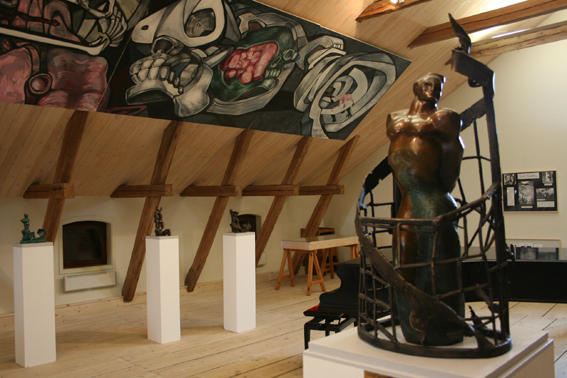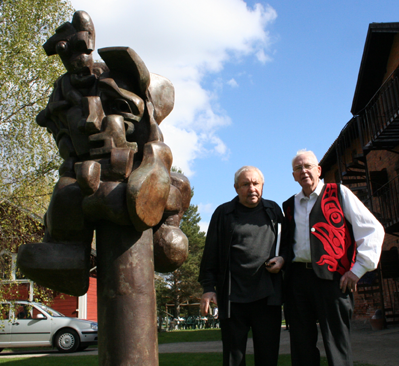
The Museum Tree of Life by Ernst Neizvestny inryms i museets övrevåning. Astleys möte med Ernst Neizvestny i slutet av 1960-talet i Moskva blev början till ett livslångt samarbete. Neizvestny som fick lämna Sovjetunionen 1976, var galleriets första utställare i Uttersberg den 14 maj 1977. Ernst fann ett andra hem i Uttersberg och återkom många år under sommaren för att arbeta och koppla av från livet i New York. Här målade han bland annat de två stora takmålningarna till museet och modellerade några av de skulpturer som ställs ut tillsammans med teckningar och grafik. Efter Sovjetunionens fall har Ernst Neizvestny regelbundet ställt ut och gjort flera monumentala verk i Ryssland. År 2004 invigdes hans 6 meter höga skulptur ”Livets träd” i centrala Moskva.
Torsten Bergmark skrev följande i DN om Neizvestnys konst.
”Hela Neizvestnys verk handlar om människans förmåga att uthärda. Om människans plåga men också hennes styrka. Hans verk kan inte vara harmoniskt, lugnt, avrundat, därför det handlar om en oavslutad kamp.”

Ernst Neizvestny och Astley Nyhlén vid Neizvestnys skulptur utanför konstmuseet 2007.
Ernst Iosifovich Neizvestny, was born on April 9, 1925 in Sverdlovsk (Yekaterinburg) and died August 9, 2016 in New York. He is a famous and important Russian sculptor of the second half of the 20th century. At the age of 17, Neizvestny joined the Red Army as a volunteer.At the close of War II, he was heavily wounded and sustained a clinical death.Although he was awarded the Order of the Red Star "posthumously" and his mother received an official notification that her son had died, Neizvestny managed to survive. In 1947, Neizvestny was enrolled at the Academy of Arts in Riga.He continued his education at the Surikov Moscow Art Institutute and the Philosophy Department of the Moscow State University. His sculptures, often based on the forms of the human body, are noted for their expressionism and powerful plasticity. Although his preferred material is bronze, his larger, monumental installations are often executed in concrete.Most of his works are arranged in extensive cycles, the best known of which is The Tree of Life, a theme he has developed since 1956. Although Nikita Khrushchev famously derided Neizvestny's works as degenerate at the Manege exhibition of 1962, the sculptor was later approached by Khruschev's relatives to construct a tomb for the former Soviet leader at the Novodevichy.Other well-known works he created during the Soviet period are Prometheus in Artek (1966) and the Lotus Flower at the Aswan Dam in Egypt (1971). In 1976, he moved from the USSR Switzerland, there he completes the Portrait of Dmitri Shostakovich in Bronze for Kennedy Center for the Performing Arts in Washington, DC. In 1977 Neizvestny moved to USA. During the 1980s, Neizvestny was a guest lecturer at the University of Oregon and at UC Berkeley. In 1996, Neizvestny completed his Mask of Sorrow, a 15-meter tall monument to the victims of Soviet purges, situated in Magadan. The same year, he was awarded the State Prize of the Russian Federation. Although he still lives in New York City, Neizvestny frequently visits Moscow and celebrated his 80th birthday there. A museum dedicated to his sculptures was established in Uttersberg, Sweden (1989). Some of his crucifixion statues were acquired by John Paul II for the Vatican Museums. In 2004 Neizvestny became an honorary member of the Russian Academy of Arts and the 6 meter tall sculpture The Tree of Life was placed at 16 Krasnoprenenskaya Naberezhnaya, entrance to Bagration Bridge, Moscow .In 2007 a large retrospective exhibiton was arranged at The Museum Tree of Life by Ernst Neizvestny in Uttersberg, Sweden.
The Ernst Neizvestny Art Museum opened in Yekaterinburg, Russia on Ernst Neizvestnys 88th birthday, April 9, 2013.
